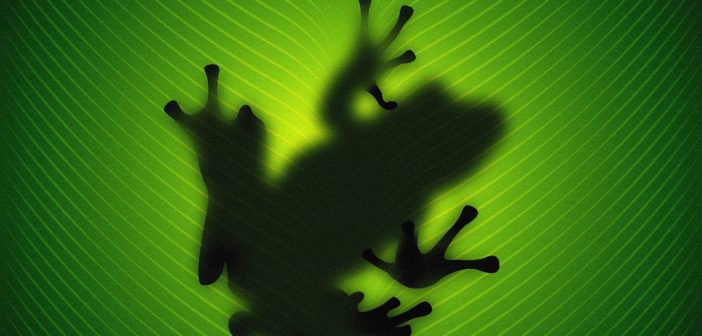You probably haven’t heard too much about kambô if you’re not into New Age healing techniques, but this bizarre and potent frog secretion has, for over two decades, become a treatment for various physical and mental issues. Although this method of treatment is not recognized by modern Western medicine as an effective form of therapy, kambô has a low risk for adverse effects, and there are not many reports of deaths or illnesses being caused by kambô applications, which are done by either indigenous tribal members or New Age practitioners who have studied its application as it is peformed by these tribes in the Amazon rainforest.
1. Kambô Comes From a Tree Frog
One of the most surprising facts is that kambô is a resin secretion that comes from the Phyllomedusa Bicolor Frog, also known as the Giant Monkey Frog. These frogs live in the northwestern part of the Amazon rainforest and are used by a handful of small indigenous tribes for staving off bad luck, hunting, and to treat diseases (like yellow fever and malaria) and snake bites.
2. It Contains 9 Bioactive Peptides
Scientists have discovered that kambô contains nine bioactive peptides, which are composed of specifically, sequentially-linked amino acids that positively impact certain bodily functions. The bioactive peptides found in kambô strongly and positively affect pancreatic and gastric secretions, adrenal cortex and pituitary gland stimulation, the body’s gastrointestinal muscles, and circulation of the blood. This frog secretion specifically contains Dermorphin and Deltorphin, two opioid peptides that have exponentially stronger pain-relieving abilities than morphine.
3. Kambô’s Anti-inflammatory and Anti-microbial Components
Scientists have found that kambô has powerful anti-inflammatory and anti-microbial properties, so it protects against numerous types of infections and viruses. Since kambô is made of the same amino acids as human beings, it can be used within the human body to aid in boosting the immune system, balancing hormone levels, fighting off parasites, relieving pain and inflammation, and promoting the firing of neurotransmitters (the brain’s chemical messengers that relay messages between the brain and the rest of the body).
4. Kambô Fights Off “Panema”
According to Soul Quest, the main purpose for the usage of kambô by indigenous groups is that it is believed to help ward off “panema”, or “bad aura”. Indigenous tribes have long held the belief that a person who has nothing going well for them is suffering from “panema”. Kambô is thought to get rid of this negative aura so that things like hunting and finding a partner are successful for that person. This purging of negative energy is similar to a chakra realignment, although this tends to clash with Western thoughts and beliefs.
5. Kambô Came to Urban Areas in the 1990s
In 1994, kambô arrived in São Paulo, Brazil via a rubber tapper named Francisco Gomes. Over the next ten years, kambô rose to popularity in city centers, and demand for this medicinal and shamanic secretion grew. In April of 2004, the National Health Monitoring Agency issued an ordinance that prohibited the advertisement of kambô for sale. Today, there are no pieces of legislation that prohibit the actual sale of kambô, and it is often applied by New Age therapists.
6. Kambô is Transdermally Applied and Absorbed
The application procedure for kambô therapy is a little unnerving for most people. This secretion can be transdermally applied by burning (yes, burning!) multiple small areas on the skin and applying kambô over the tops of the burned areas. Anyone who has this done will likely experience some sudden effects after the application is made, including increased blood pumping throughout the body and an elevated heart rate. Essentially, the person receiving the treatment will feel like they have been rigorously exercising without having actually done anything. Powerful purges of bile soon follow, and the person receiving treatment is encouraged to drink a lot of water throughout the process in order to keep toxins flowing out of the body.
Getting kambô applications can be expensive, and there might not be a practitioner working in your area. In fact, the list of kambô practitioners in urban areas is relatively short. However, this type of treatment might be worth considering if you suffer from gastrointestinal issues or chronic inflammation.




